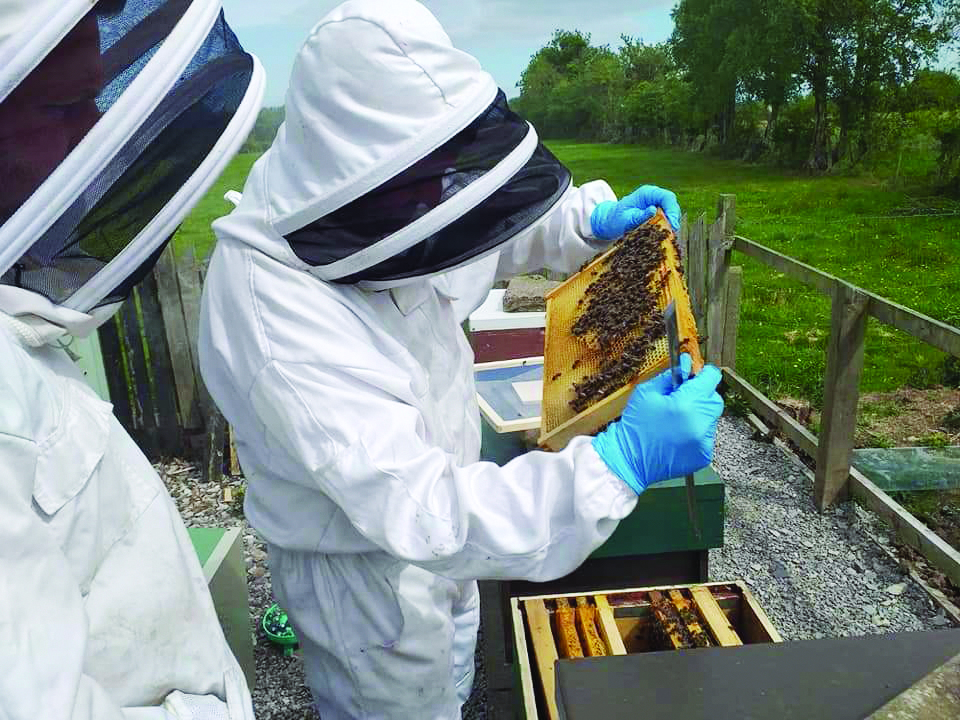Modern farming is a double-edged sword: We have developed techniques of manipulating our environment which are so sophisticated and efficient that the world can sustain a population of seven billion people – but it has come at a cost.
The role that hi-tech farming has played in our climate crisis is well-publicised, however it is not the only existential crisis industrial agriculture has abetted.
Packy Carty is a member of The Low Country Native Irish Honeybee Association – a group of Tyrone beekeepers who work to conserve our indigenous Irish honeybee. But it isn’t just the future of bees that fills Packy with anxiety.
There is a world of pollinating insects known collectively as ‘pollinators’ who are at risk of extinction if we don’t change our ways, and such an eventuality could be devastating. To negate this risk, Packy and his comrades are encouraging each and everyone of us to cultivate ‘wild areas’ wherever we can to promote biodiversity, thereby allowing pollinators to continue to play their vital role in our delicate ecosystem.
Packy outlined the perilous predicament we are stumbling blindly towards as we continue to refine habitats to produce specific farming goals, at the expense of our natural biodiversity.
“Fifty years ago, fields in Ireland would have been best described as ‘meadows’ because they hosted a diversity of plant life, meaning pollen was produced throughout the year – when the cycle of one plant stopped, another would begin.
“This was ideal for all insects who feed on pollen, not just bees,” he explained.
“However, the green pastures that cover much of rural Ireland and Tyrone today ostensibly appear lush and wild, so we presume they are ecologically diverse and vibrant. But they are, in fact, more akin to baron planes for large parts of the year,” Packy added.
To feed livestock, fields are heavily farmed using manure, artificial fertilisers and pesticides, disrupting natural cycles and eradicating some species of plants.
Monoculture
Hedgerows which were once habitats rich with plant life are now trimmed back, reducing biodiversity.
As a result of our manipulation of the land, a monoculture has developed within which there is decreasingly less food for pollinators.
But what does less pollen-spreading bugs mean for us?
Packy said, “These small animals have a vital role in our ecosystem and sit at the base of the food chain. We have all heard of the butterfly effect which states that one small change – or extinction of a species in this case – can have a devastating ripple effect on up the chain.”
The consequences could be unforeseen and catastrophic, but Packy is hopeful that the world – or at least Ireland – is waking up to the essential role pollinators play if our ecological landscape and life.
“Human husbandry is helping maintain honeybee numbers, but there are at least 98 species of native bees in Ireland, and then we have to account for bumblebees, butterflies and many other indigenous wild pollinators,” he said.
“Thankfully, initiatives such as the All-Ireland Pollination Project are taking this problem seriously. I would encourage everyone, individuals and groups, to enable biodiversity where they can, including taking advantage of grant schemes such as the Live Here Love Here, Rural Community Pollinator Grants Scheme.”
By Emmet McElhatton







